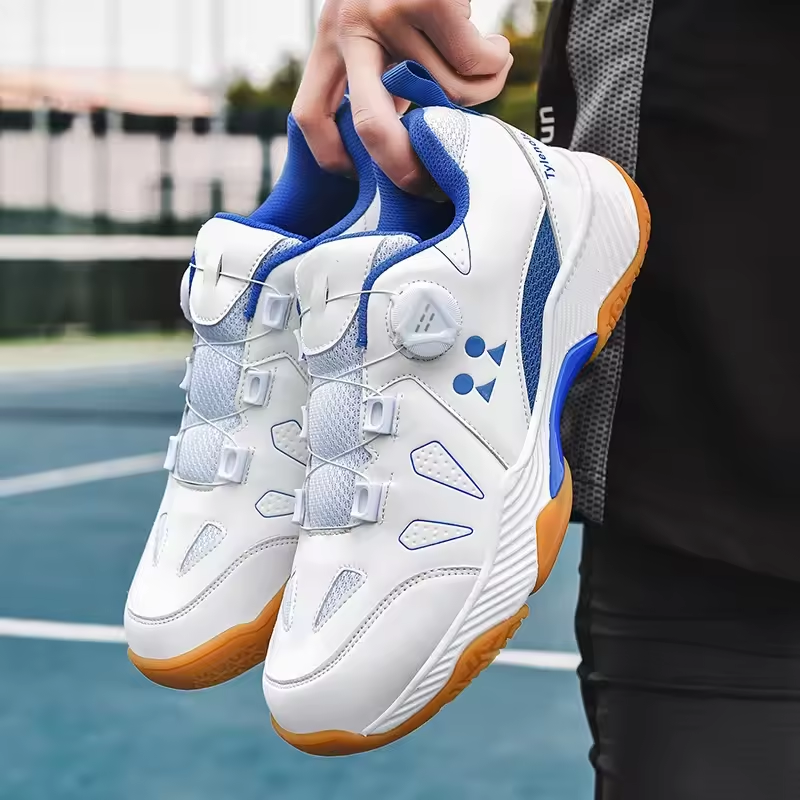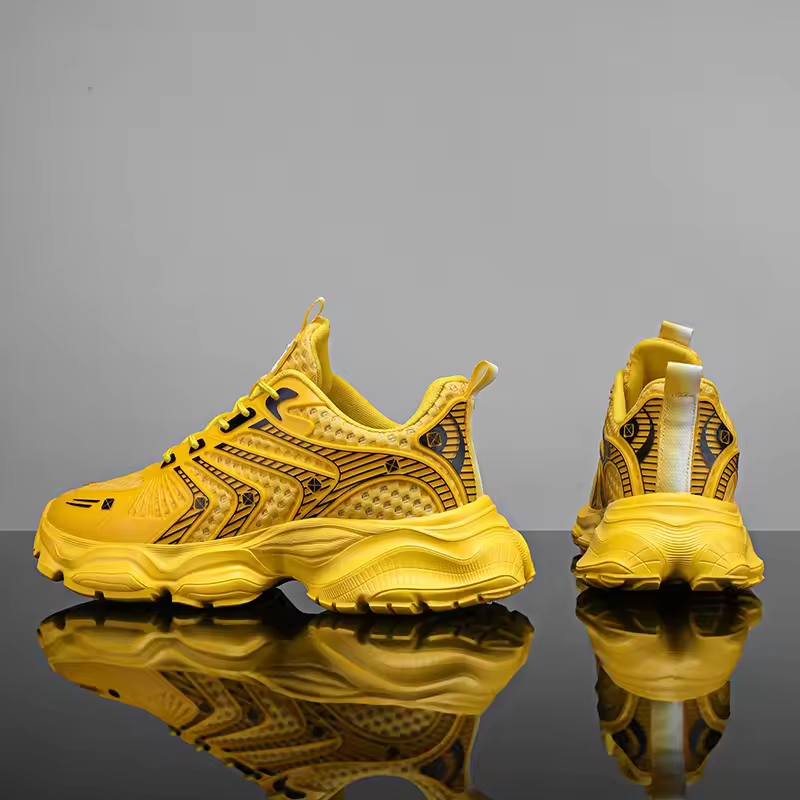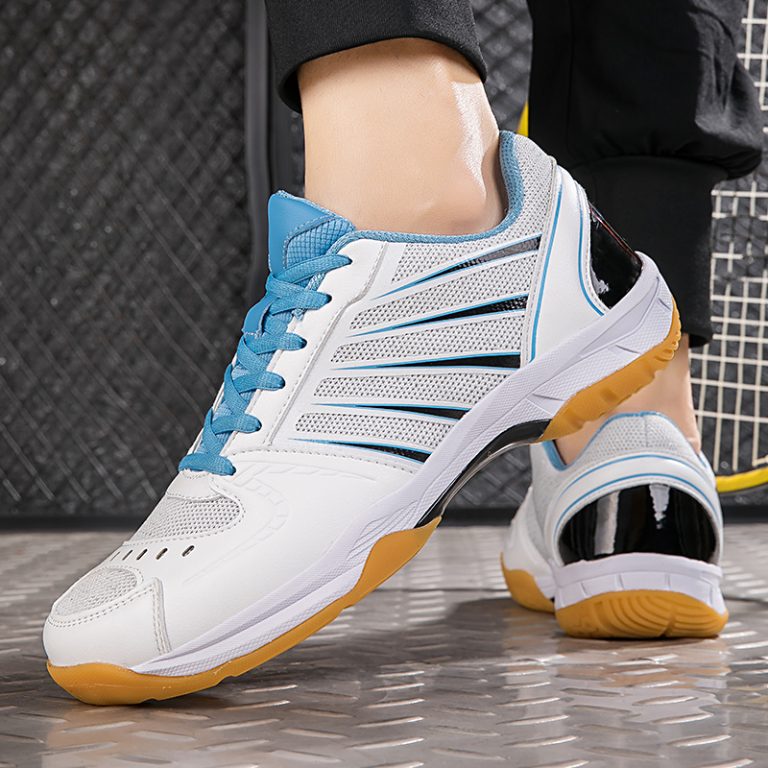Introduction to Hard Court Tennis Shoes
Playing tennis on hard courts demands specific types of footwear. Hard court tennis shoes must offer a blend of endurance, comfort, and support to withstand the tough playing surface. These shoes feature unique characteristics tailored for the rapid, high-impact movements typical on hard court surfaces.
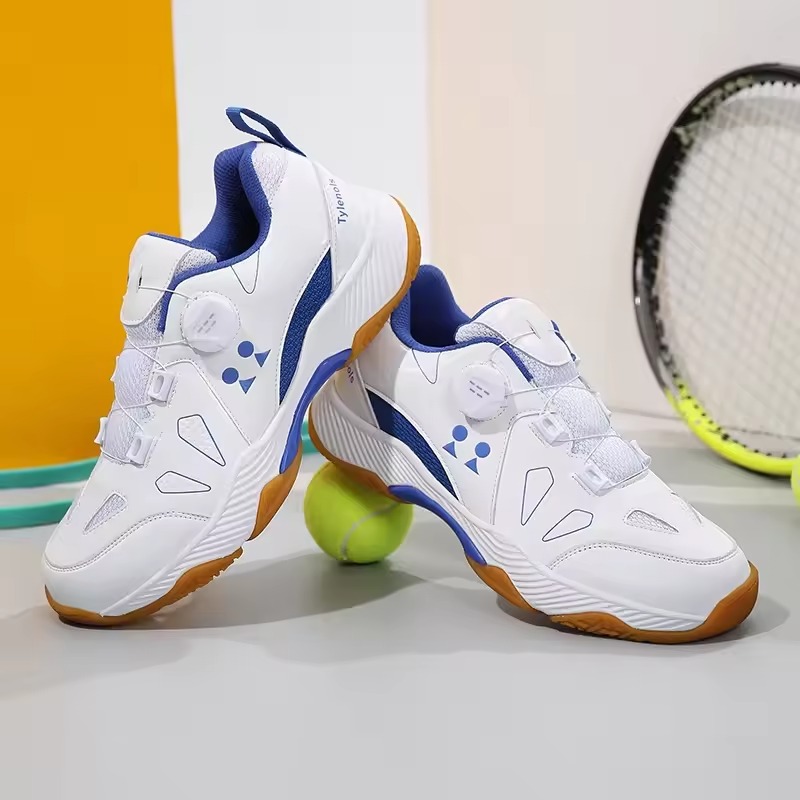
The right pair of hard court tennis shoes can make a significant difference in a player’s game. They protect against injuries, enhance performance, and improve overall court feel. As we look towards 2025, advancements in shoe technology continue to evolve, offering players even more specialized options.
When searching for hard court tennis shoes, consider the court surface, playing style, and foot type. Hard courts are abrasive, so durability is key. Players should seek shoes with reinforced outsoles and robust material construction. Moreover, comfort is crucial – cushioning systems help absorb shock, preventing fatigue and stress on joints.
In this section, we discuss the essential characteristics of hard court tennis shoes that make them suitable for the demands of the game. We’ll also explore how upcoming advances in technology are shaping the future of these vital pieces of equipment for tennis enthusiasts and professional players alike.
Key Features of Hard Court Tennis Shoes
To play at your best on hard courts, your shoes must have key features. These features are crafted to handle the unique challenges of hard court play. We’ve outlined the most important ones below.
Durability and Outsole Design
Hard court tennis shoes must be sturdy. A strong outsole design is critical for durability. Shoes should have outsoles that resist abrasion. Look for thicker outsoles with a modified herringbone pattern. They’ll provide longevity and suitable traction.
Cushioning and Shock Absorption
Proper cushioning is vital for comfort and injury prevention. Look for shoes with good midsoles. They’ll absorb shock and reduce the strain on your legs and feet.
Upper Material and Ventilation
The upper part of the shoe should combine toughness with breathability. Materials like synthetic mesh offer this balance. They keep your feet cool and aid in preventing blisters.
Lateral Support and Stability
Fast movements need strong lateral support. Hard court tennis shoes should have a robust frame. This helps maintain stability during side-to-side action. It’s also essential for ankle support.
Innovations in 2025 Tennis Shoe Technology
As 2025 approaches, tennis shoe technology is advancing rapidly. Designers are crafting features that push the limits of comfort, performance, and durability. Innovations are not just enhancing the player’s game but also heading towards more personalized and environmentally friendly options.
Adaptive Fit Technologies
One of the most exciting advancements is adaptive fit technologies. These innovations include dynamic lacing systems and materials that mold to the player’s foot. Smart fabrics and responsive cushioning adapt to movement and playing style. They provide a customized fit for each athlete. This personalized fit is crucial for support and comfort on the unforgiving hard court surface.
Sustainable Materials in Shoe Construction
Sustainability is another key development in hard court tennis shoes. Brands are making a shift towards eco-friendly materials. They are using recycled rubber for outsoles and bio-based fibers for the shoe uppers. These sustainable materials help reduce the environmental impact of shoe manufacturing. Players now have the option to choose hard court tennis shoes that are kind to their feet and the planet.
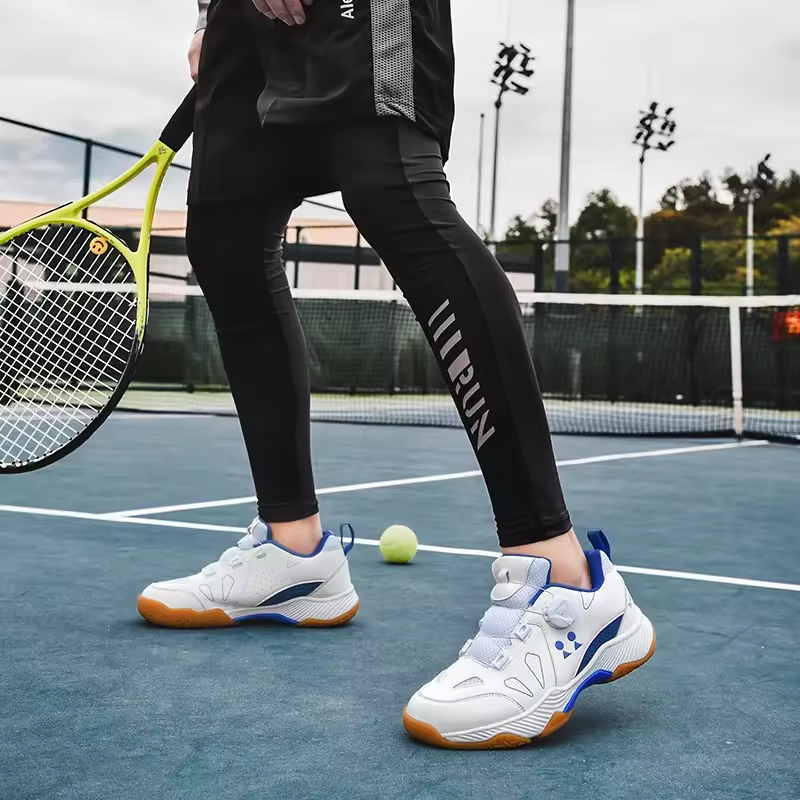
The Importance of Tread Patterns for Hard Courts
The tread pattern on hard court tennis shoes is crucial. It affects grip and player safety. Hard courts can be slick, so patterns that enhance traction are essential. The right pattern ensures quick, safe movements during play.
Look for modified herringbone or multi-directional patterns on the outsole of the shoes. These treads provide the best blend of grip and sliding ability. This combination allows players to move swiftly and change directions accurately.
Without a good tread pattern, players may slip. This increases the risk of injuries. Moreover, the right tread pattern can prevent excessive wear of the sole. This is especially important on the abrasive surfaces of hard courts.
In summary, for hard court tennis shoes, the tread pattern is not just for traction. It’s a key component for performance, safety, and durability. When picking hard court shoes, always check the tread pattern. It must be suitable for the high demands of hard court play.
A Comparison with Clay and Grass Court Shoes
When looking for tennis shoes, the type of court is a major factor to consider. Clay and grass courts have different demands compared to hard courts. Here’s how hard court tennis shoes stack up against those designed for other surfaces:
Clay Court Shoes
For clay courts, shoes need specialized features:
- Herringbone Tread Pattern: This pattern helps maintain grip on the slippery, dusty surface.
- Upper Material: Shoes often have tighter woven uppers to keep clay out.
- Lateral Stability: Due to the sliding nature of clay, shoes need strong lateral support to prevent injuries.
Comparatively, hard court tennis shoes focus more on durability and shock absorption.
Grass Court Shoes
On grass courts, requirements differ again:
- Pimpled or Nubbed Outsoles: These provide better traction on the soft and potentially slick grass.
- Flexibility: Shoes for grass courts are often lighter and more flexible to allow for quick sprints.
- Flat Tread Pattern: Unlike the modified herringbone, a flatter pattern prevents damaging the court and provides stability.
Grass court shoes are less about durability, as the surface is softer than hard courts.
Why It Matters
Using the correct shoe type for each court surface can improve your game and prevent wear and tear on the courts. Hard court tennis shoes are built to handle the abrasive nature of concrete, providing lasting performance and injury prevention. Remember, while a hard court shoe can sometimes be used on clay or grass, shoes designed for those surfaces may not offer the necessary support or lifespan for hard court play.
Top Brands and Models for Hard Court Tennis Shoes in 2025
As we look ahead to 2025, several top brands have made strides in the hard court tennis shoes market. They stand out by combining advanced technologies with player-specific features. Let’s explore the brands and models that are setting new benchmarks for performance and comfort on hard courts.
- Brand A’s Challenger Pro: These shoes feature a revolutionary sole design. They promote swift movements and durability. An advanced cushioning system offers unmatched shock absorption.
- Brand B’s Endurance Elite: Known for adaptive fit technology, these shoes provide a custom fit. They adapt to your foot shape for superior support and stability.
- Brand C’s TerraMaster: Boasting environmentally friendly construction, TerraMaster uses sustainable materials. The shoes still maintain the high standards of durability and comfort needed for hard court play.
- Brand D’s Velocity Verve: A favorite among many players for their ventilation system. The shoe’s upper has a lightweight mesh that keeps feet cool and dry.
- Brand E’s CourtSync: This model offers exceptional lateral support. It integrates a robust frame design to keep your feet secure during intense matches.
It is important to remember that while these models are leading the charge, the perfect shoe is highly individual. Players should still consider their playing style, foot type, and personal preferences. Always try on various models to find the pair that feels best for your game. By doing so, you will ensure that your hard court tennis shoes enhance your performance on the court.
Maintenance Tips for Extending the Life of Your Hard Court Shoes
Proper care for your hard court tennis shoes is key to their longevity. Here are some tips to keep them in top shape:
- Clean Regularly: Remove dirt after each play. Use a soft brush or cloth to wipe away any debris.
- Dry Properly: Let shoes air dry away from direct heat. If they get wet, stuff them with newspaper to absorb moisture.
- Rotate Shoes: If possible, rotate between two pairs. This allows each pair to rest and reduces wear.
- Use Correctly: Wear your hard court shoes only on court surfaces. Using them elsewhere can speed up wear.
- Lacing Technique Matters: Lace your shoes tightly for support, yet not too tight to avoid stress on the material.
- Store Correctly: Keep your shoes in a cool, dry place. Avoid leaving them in hot cars or direct sunlight.
By following these simple maintenance steps, your hard court tennis shoes should remain comfortable, supportive, and durable for many matches to come. Always check your shoes for signs of wear and tear to determine when it’s time for a new pair.
